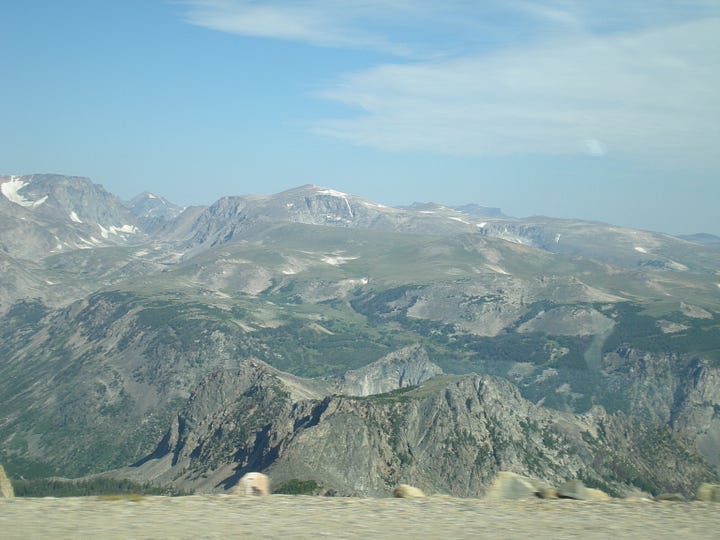

The Beartooth Highway is one of the most scenic drives in the United States. Covering 68 miles from Red Lodge, Montana to the Northeast Entrance of Yellowstone National Park, it brings visitors into and through untouched wilderness and rugged terrain. Jagged peaks soar on all sides. Windy roads carve into the cliffsides, creating drop offs that keep drivers on their toes and passengers at times closing their eyes.
As a popular summer route into Yellowstone, open from Memorial - Columbus Day, many know of its existence and plan a trip to experience it. While there, travelers certainly appreciate the views and marvel at its construction. Yet few ever leave the comfort of their car in order to take full advantage of all that’s available and accessible along the highway.
I, myself, have crossed this pass more than sixty times, en route to Cooke City, Montana. I’ve hiked trails just off the highway, spotted animals upon the hillsides, and slept at various campgrounds. My family has dined at most available restaurants and taken time to explore the towns in which they are located. Over the past four decades, I’ve seen first hand that the Beartooth Pass is far more than just a means to reach one of the country’s most famous national parks. It is a stand-alone destination and one of the best places to spend time exploring the outdoors.
History of the Beartooth Pass
In the mid-1800s, the discovery of natural resources near Cooke City and Red Lodge drew waves of entrepreneurs, quickly transforming both into prominent Montana mining towns. After Yellowstone was designated a national park in 1872, the influx of people continued—this time with tourists eager to explore its extraordinary geothermal features. With gold, minerals, and growing numbers of people to move through the region, the lack of a major transportation system became increasingly problematic.
The region’s rugged terrain made building a railway impractical, leaving communities largely isolated. It wasn’t until the rise of the automobile in the late 1920s that a viable solution finally emerged. Locals began lobbying for a road system, and after years of persistent advocacy, Congress passed the Parks Approaches Act, which provided the funding and authority needed to build what would become the Beartooth Pass. Construction began in 1931, and over the next five years, work crews carved out the dramatic switchbacks that would make the road legendary. When it opened on June 14, 1936, the pass reached a summit elevation of 10,947 feet, making it the highest road in the United States at the time.
Initially, the pass had no official name. The National Park Service referred to it as the Cooke City Road, while locals in Red Lodge called it the Red Lodge–Cooke City Highway. This remained the status quo until more than two decades later, in 1960, the Montana State Advertising Department invited the public to submit naming ideas. Suggestions included “Highway to the Clouds,” “Highway to the Skies,” and “Highway to the Heavens.” Ultimately, they chose “Beartooth,” inspired by the Crow Indian term Na Piet Say, meaning “the bear’s tooth”—a reference to a jagged rock formation that juts out of the plateau near the road’s summit.
8 Things To Do Along the Beartooth Pass
Explore Red Lodge, Montana
Before starting the drive, it is worth your while to explore Red Lodge, Montana. Hiking trails take you around the town’s perimeter and further afield into Custer Gallatin National Forest. Rock Creek provides the perfect location for fishing and paddling. Shops and restaurants of all kinds line the town’s vibrant Main Street. Swing by Scoops for some delicious local ice cream (Moose Tracks is a must try flavor) or stop in Sylvan Peak to load up outdoor gear. If you’re in the market for quirky shirts or funny souvenirs, like elk poop candy, head to Moosley Tees. Various accommodations dot the town, with motels, hotels and guest ranches offering a plethora of options.
Go Summer Skiing at Beartooth Basin
For skiing enthusiasts, there’s no better spot than Beartooth Basin. Opening in mid-to-late May, it offers those chasing a longer season the rare chance to carve turns well into summer. All nine trails— served by two two high speed lifts— are steep and best suited for experienced skiers, but they reward with spectacular views and snow that hasn’t seen traffic all winter. Depending on conditions, the basin remains open until early July and frequently hosts events or competitions. While tickets are available online, many opt to buy them in person at their mobile office: a trailer parked at the top of the lift, where only cash and check are accepted. Just one of the many details that add to the operation’s charm.
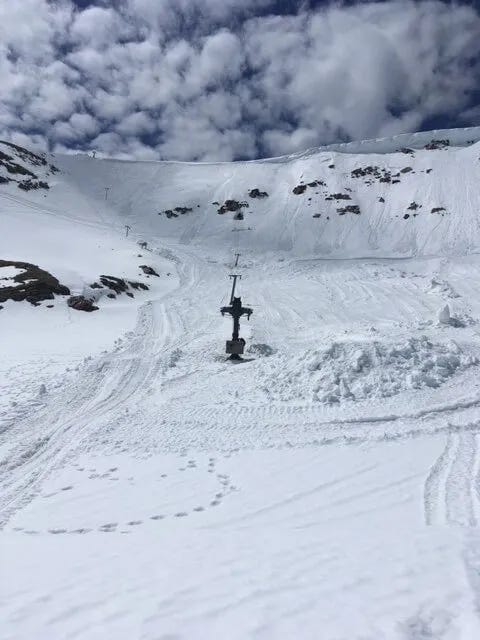
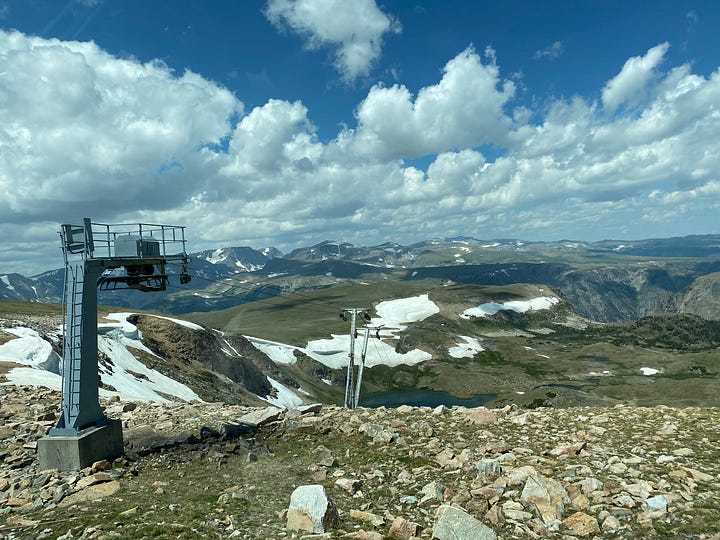
Photograph the Vistas & Notable Mountains
Some of the most stunning peaks in the Greater Yellowstone region lie within the Beartooth-Absaroka Range. Among them, Pilot and Index stand out—towering in partial isolation and commanding attention with their dramatic profiles. Composed of unstable rock, neither summit is accessible by trail, but simply gazing up at these majestic peaks is reward enough. As you drive toward the summit of Beartooth Pass, keep an eye out for the Bear’s Tooth itself—the jagged spire that gave the range its name. It's easy to miss, so stay alert. Also worth a stop is Beartooth Butte, a distinctive red-hued formation rising above a nearby lake, offering an accessible spot to explore the region’s unique geology and enjoy panoramic views.
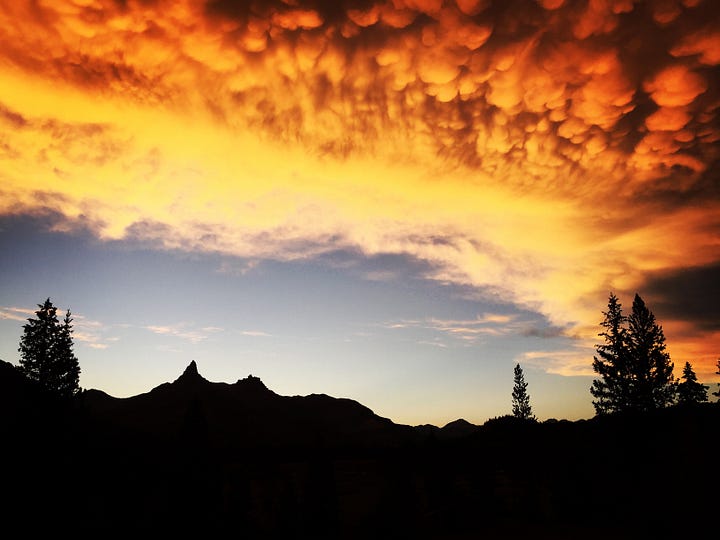
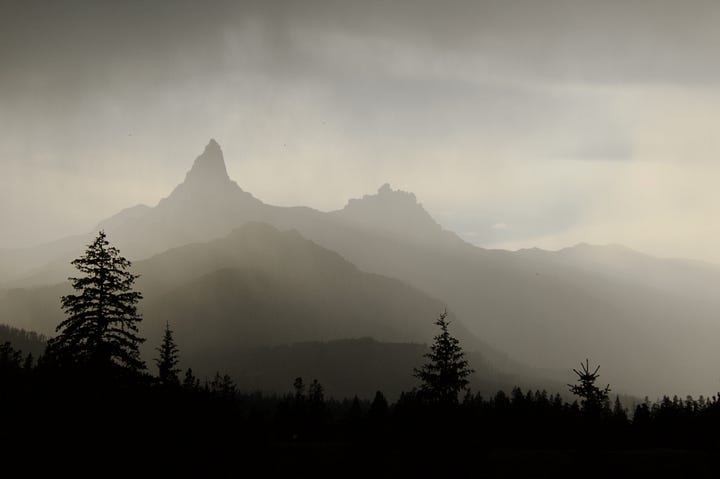
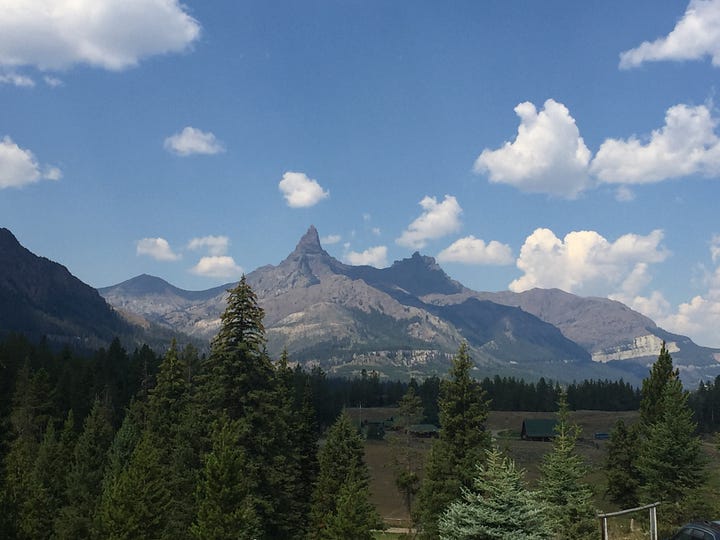
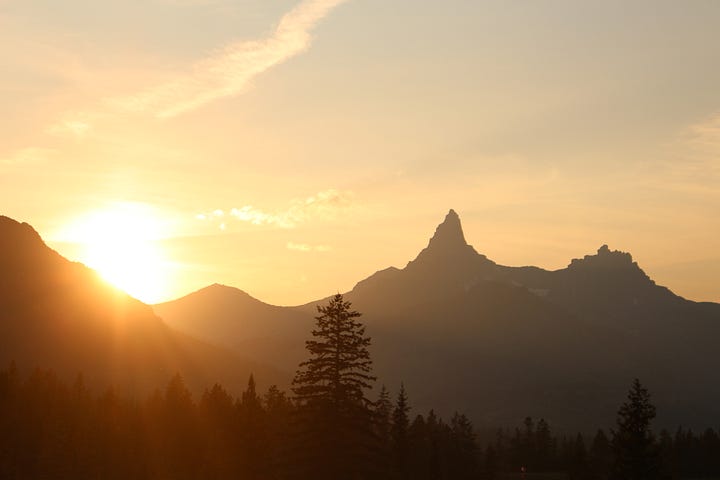
Explore the Campgrounds
To fully immerse yourself in the outdoors, consider spending a night at one of the thirteen campgrounds scattered between Red Lodge and Cooke City. Leave your car behind and set out on trails that lead deeper into the Beartooth-Absaroka Wilderness, or bring a fishing rod and spend the afternoon exploring the region’s crystal-clear alpine lakes. Beartooth Lake Campground, nestled beside the lake and beneath a striking butte, offers opportunities for both, with footpaths that begin right at camp. Keep an eye out for wildlife—deer, moose, bears, and even wolves roam the area, and you’re likely to spot tracks or scat even if the animals themselves remain elusive. Be sure to store your food properly to avoid any curious nighttime visitors.
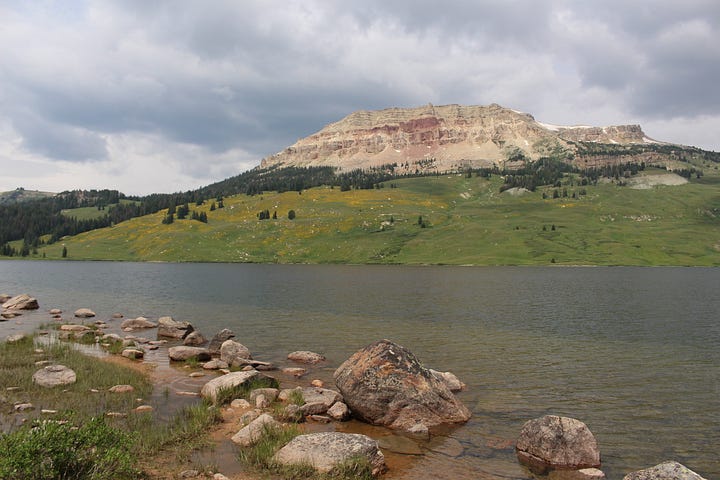
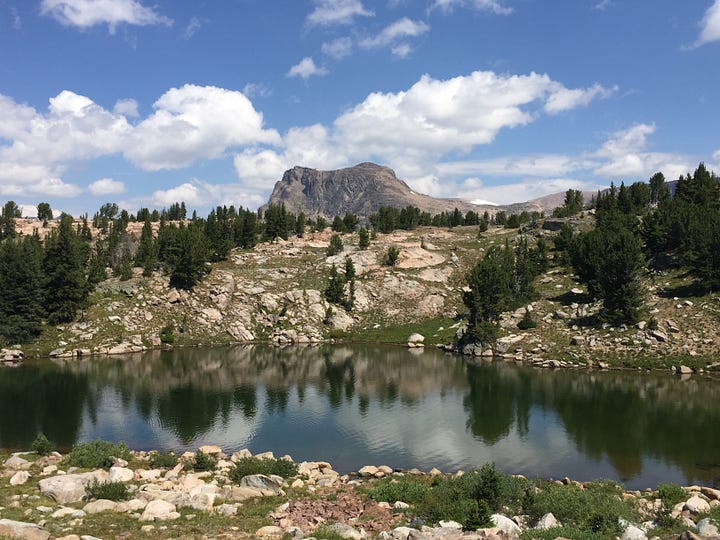
Visit the Top of the World
About halfway between Red Lodge and Cooke City you’ll find The Top of the World, sitting 9,400 feet above sea level. Built on Beartooth Lake in 1934, it has since moved to sit on the side of the Beartooth Highway and serves as the only store along the pass. You can stop to refuel, grab snacks or stock up on a wide range of souvenirs, from a rabbit’s foot to jigsaw postcards. Having expanded in the 60s to include a motel, visitors also have the option of spending the night. For around $200 you can reserve a cabin that sleeps three or secure an RV-site for $45. Equipment rentals, like fishing gear and canoes, are also available if you wish to spend the day exploring one of the many nearby lakes.
Hike Around Clay Butte Lookout
Located within the Shoshone National Forest and framed by the Absaroka Mountains, the fire tower and lookout offers a spectacular vista—and if you're lucky, you might catch a ranger on duty for a quick chat. From this spot, you can hike to the summit of Beartooth Butte, one of the area’s most distinctive landforms, in just a few hours. While following the ridge might seem appealing, descending into the valley and climbing back up is the quicker route. For a more challenging trek, Lonesome Mountain—accessible from Beartooth Lake Campground—typically takes around eight hours. If you're looking for a more relaxed outing, nearby lakes like Beauty and Becker make ideal picnic destinations and can be reached via relatively flat trails.
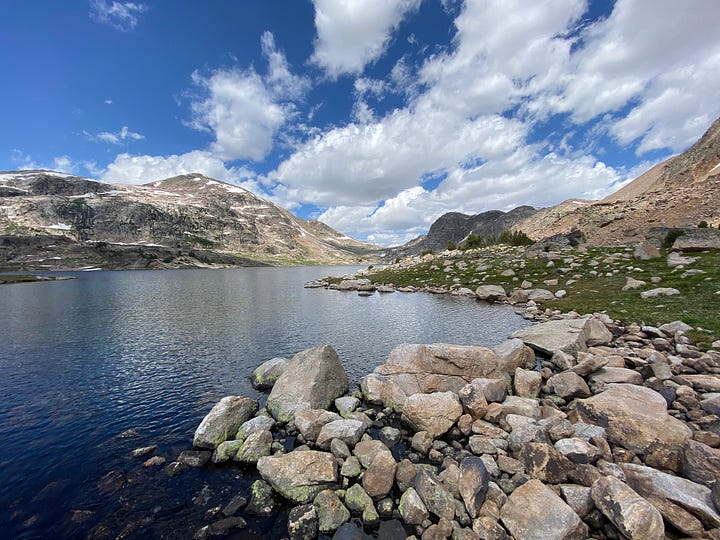
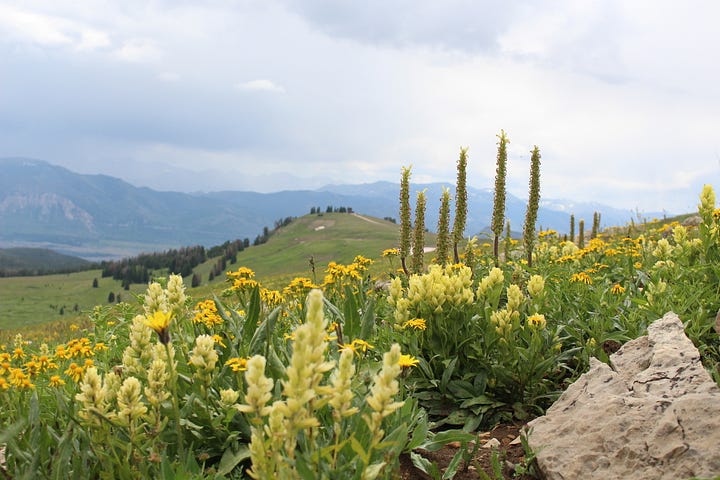
Explore Cooke City, Montana
About twenty minutes before entering Yellowstone’s northeast entrance, you'll arrive in Cooke City, Montana. Despite having just around 77 residents (according to the 2000 census), the town offers nearly everything you might need—and plenty you didn’t know you wanted.
Along the main street, you’ll find shops like the Yellowstone Trading Post, which sells everything from handcrafted jewelry to kitschy souvenirs, including onesie pajamas and animal hats. Spend more than $5 and you’ll earn a ticket to its “museum,” a room filled with taxidermied animals posed in their natural habitat. It only takes a few minutes to explore, but it adds a memorable, offbeat touch to the mountain town experience.
Just down the road is the Cooke City General Store—listed on the National Register of Historic Places. It has been in operation since 1886 and retains much of its original charm. Large jars of candy are on display, and wooden shelves are stocked with groceries. It’s also the best spot in town to purchase a fishing license, though be aware they only accept cash or checks. Be sure to grab a few of their vintage-style postcards, which often depict humorous encounters between people and wildlife.
Dining in Cooke City is more about character than cuisine. The Miner’s Saloon serves surprisingly good pizza and, doubling as a casino, lets you gamble while you eat. The Beartooth Café and Buns N Beds offer classic American fare. For outdoor adventures, Cooke City is also a launch point:Skyline Guest Ranch and Guide Services organizes horseback rides, pack trips, fishing excursions, and hunting expeditions throughout the Beartooth-Absaroka Wilderness.
Fish The Clarks Fork of the Yellowstone River
With its headwaters just outside Cooke City, Montana, the upper stretch of this tributary is an angler’s. For miles, it flows alongside Highway 212, making it easily accessible for those seeking a peaceful day of trout fishing. A valid fishing license is required, and regulations can vary depending on which section of the river you're fishing—so be sure to check before you cast. Once you're set with the proper documentation, head out of Cooke City, away from Yellowstone, and watch for roadside pullouts that offer convenient access to the water.
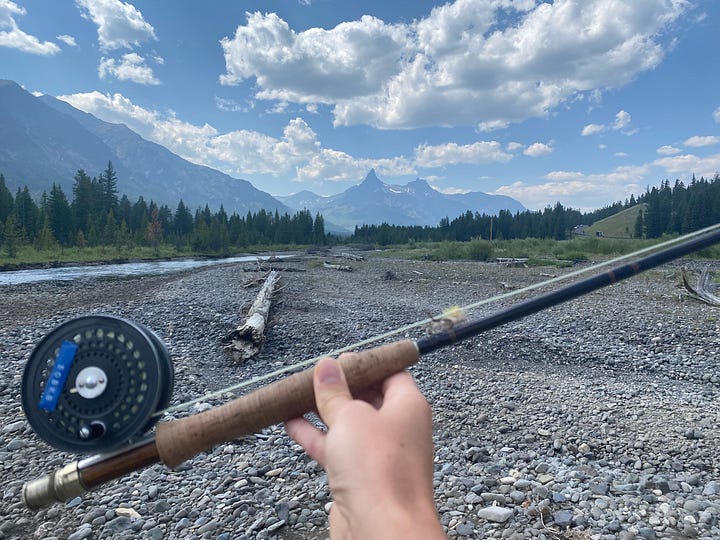

Where to Stay Along the Way
While you can technically drive the Beartooth Pass from end to end in about 2 hours, truly experiencing all it has to offer takes more time. With countless opportunities for hiking, fishing, photography, and exploration—not to mention the stunning campgrounds and sweeping alpine views—an overnight (or two) is well worth it. Fortunately, there are plenty of places to camp or stay along the way, especially for those who enjoy sleeping under the stars.
Accommodations
Pollard Hotel (Red Lodge): the fanciest lodging in town and chock full of history.
Red Lodge Inn or Alpine Lodge (Red Lodge): These offer a more simplistic and affordable option. Within walking distance of all restaurants and shops, you’re still in the action without taxing your wallet.
High Country Motel (Cooke City): Offers guests access to a hot tub, which, at high elevation, can be enjoyed all year.
Soda Butte Lodge (Cooke City): The town’s largest accommodation with 32 rooms. It has a restaurant and saloon attached, for the full western experience
Skyline Guest Ranch (Cooke City): Further outside the town- aka not walking distance- but a bit newer. It offers numerous activities on site and off.
AirBnB and Vrbo: Just like any city or town, you have rental options through these two companies. This might make sense if you’re traveling with a large group or family, as you can get an entire house.
Campgrounds and Campsites
Aside from a few rooms available at the Top of the World resort, once you leave Red Lodge, camping—whether in a tent or RV—is your primary lodging option. Fortunately, there are plenty of campgrounds to choose from, depending on how far you plan to travel each day and the type of activities in which you are interested. Some sites accept reservations, while others operate on a first-come, first-served basis. To check availability and secure a spot when possible, visit www.recreation.gov. Most campgrounds accommodate both tent and car/RV camping. No matter where you stay, keep in mind that you're in grizzly bear country—so be sure to follow proper food storage guidelines and stay Bear Aware.
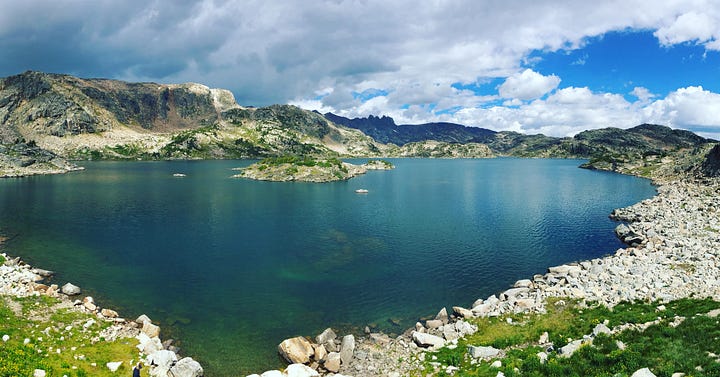
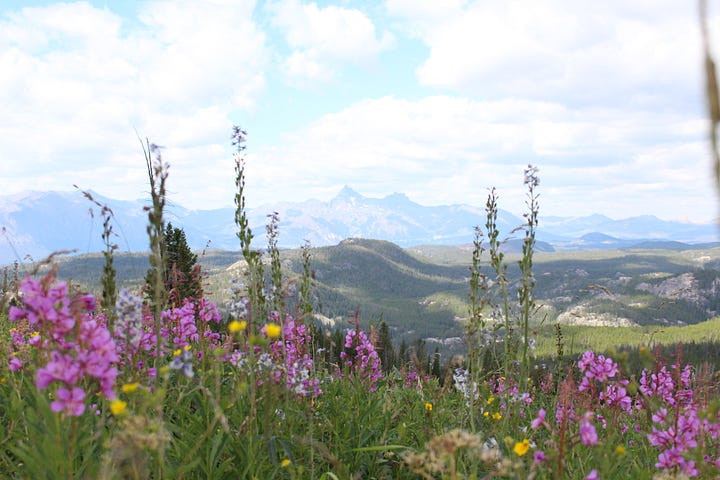
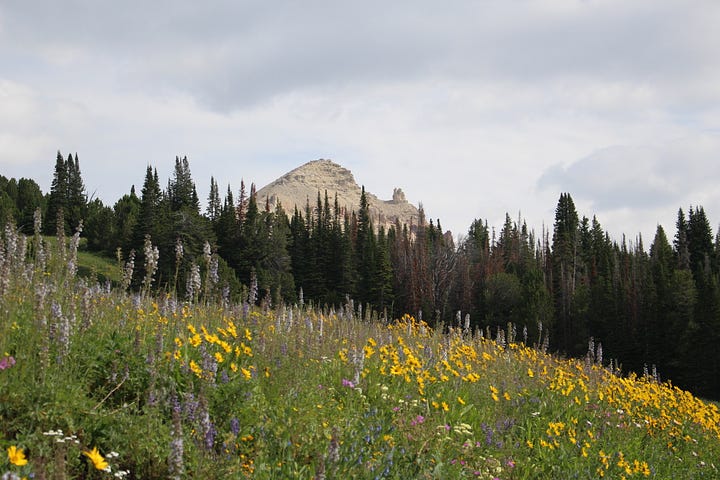
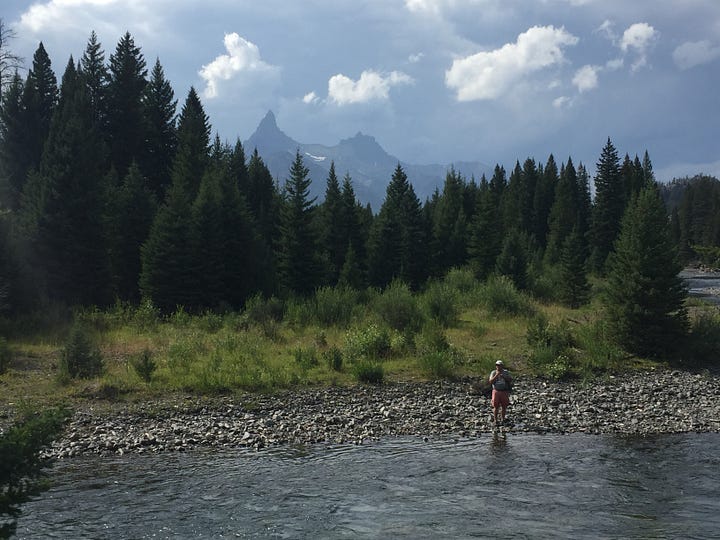
Designated an All-American Road by the National Scenic Byways program, the Beartooth Pass takes travelers through some of the most remote and rugged landscapes in the country. Winding through sections of the Custer and Shoshone National Forests and into the Absaroka-Beartooth Wilderness, it offers endless opportunities to explore pristine natural beauty. While the drive can be completed in just a few hours, it's well worth slowing down to fully experience everything the route has to offer.
Note: The highway may only be open from May- October but that doesn’t mean the towns are inaccessible in winter. You just have to be a bit creative and flexible. The Chief Joseph Highway is plowed, meaning Cooke City is reachable if you fly into Cody, Wyoming. Top of the World is also open year-round. You just have to snowmobile there.






